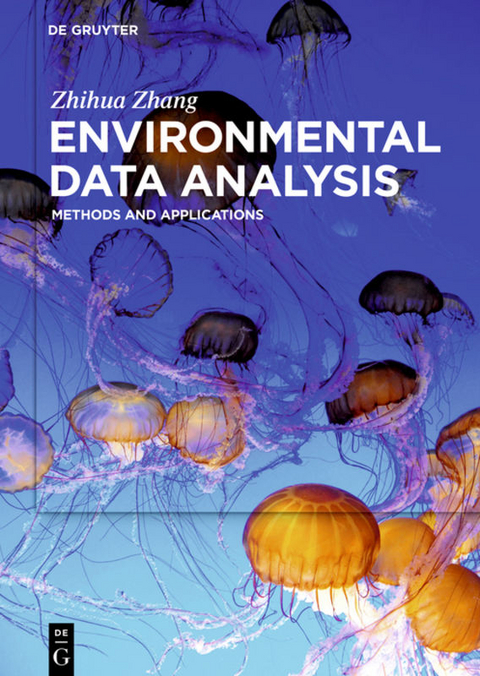Environmental Data Analysis
De Gruyter (Verlag)
978-3-11-043001-1 (ISBN)
Zhihua Zhang, Beijing Normal University, Beijing, China.
Table of content:
Preface
Chapter 1. Time Series Analysis
1.1. State Estimation
1.2. Power Spectrum
1.3. Optimal Filtering
1.4. State Space Models
1.5. Information Theory
1.6. Complex Networks
Chapter 2. Dynamical Systems
2.1. State-Space Reconstruction
2.2. Determinism and Predictability
2.3. Embedding Methods
2.4. Lyapunov Exponents
2.5. Modelling and Forecasting
2.6. Chaos and nonlinear noise reduction
Chapter 3. Approximation
3.1. Trigonometric Approximation
3.2. Polynomial Approximation
3.3. Spline Approximation
3.4. Rational Approximation
3.5. Wavelet Approximation
3.6. Multivariate Approximation
3.7. Dimensionality reduction
3.8. Adaptive Basis Selection and Greedy Algorithm
Chapter 4. Interpolation
4.1. Curve Fitting
4.2. Lagrange Interpolation
4.3. Hermite Interpolation
4.4. Spline Interpolation
4.5. Case Studies
Chapter 5. Satistical Methods
5.1. Linear Regression
5.2. Logistic Regression
5.3. Multiple Regression
5.4. Analysis of Covariance
5.5. Cluster Analysis
5.6. Discriminant Analysis.
5.7. Principal Component Analysis
5.8. Factor Analysis
5.9. SPSS software
Chapter 6. Numerical Methods
6.1. Numerical Integration
6.2. Numerical Differentiation
6.3. Direct and Iterative Methods
6.4. Finite Difference Methods.
6.5. Finite Element Methods.
6.6. Finite Volume Methods
6.7. Wavelet Methods
Chapter 7. Optimization
7.1. Steepest Descent and Newton methods
7.2. Linear optimization
7.3. Lagrange multipliers
7.4. Karush-Kuhn-Tucker conditions
7.5. Primal-dual interior-point method
7.6. The simplex method
7.7. Stochastic optimization
Chapter 8. Risk Assessments
Chapter 9. Life Cycle Assessments
"Den Anspruch, ein wenig beachtetes Kapitel der Utopiegeschichte zwischen bürgerlichem Realismus und Neuer Sachlichkeit aufzuarbeiten und dabei auch ihre sich wandelnde Dynamik im Austausch mit anderen Diskursen zu rekonstruieren, löst die Studie zweifellos ein. Bedeutsamer noch als diese Revision der Utopiegeschichte ist jedoch vielleicht ein anderes Verdienst: Die Untersuchung vermag die Gattung tatsächlich als 'Schauplatz politischer Imaginationsbildung' zu konturieren und erschließt damit ein bisher kaum beachtetes 'Erklärungspotenzial' der Utopie [...]."
Linda Maeding in: Literaturkritik.de 2017, www.literaturkritik.de
| Erscheinungsdatum | 25.11.2016 |
|---|---|
| Verlagsort | Berlin/Boston |
| Sprache | englisch |
| Maße | 170 x 240 mm |
| Gewicht | 747 g |
| Themenwelt | Mathematik / Informatik ► Mathematik |
| Schlagworte | Analysis • Applied • ARUTYUNOV • Business & Economics • BUSINESS & ECONOMICS, Infrastructure • Data Analysis • Data processing • Datenanalyse • earth sciences • Environmental Science • Environmental Sciences • Environmental sciences, Data processing • Environmental sciences, Mathematics • General • Geography • GtB • Infrastructure • Mathematics • Mathematik • Modell • Science • SET-VALUED • Social Science • SOCIAL SCIENCE, General • Umweltwissenschaft • Umweltwissenschaften |
| ISBN-10 | 3-11-043001-0 / 3110430010 |
| ISBN-13 | 978-3-11-043001-1 / 9783110430011 |
| Zustand | Neuware |
| Haben Sie eine Frage zum Produkt? |
aus dem Bereich




